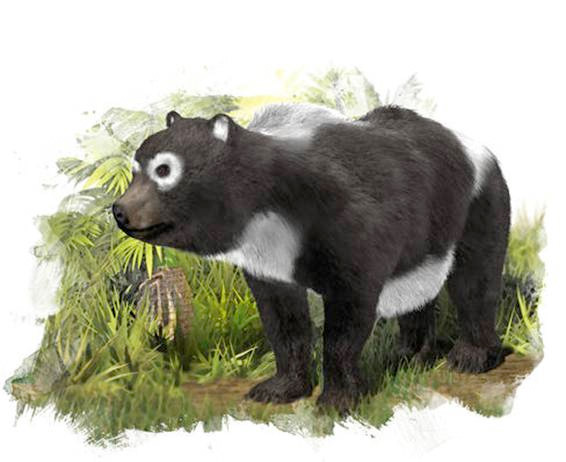Oldest Panda Fossils Found in Surprising Place

All giant pandas may come from China, but fossils reveal that the oldest known ancestor of the lineage dwelled in Spain, researchers say.
The giant panda (Ailuropoda melanoleuca) is known worldwide for its black-and-white fur. The giant panda is unique among bears for dining almost entirely on bamboo — other members of the bear family are omnivorous or mostly carnivorous.
Genetic evidence suggests the ancestors of giant pandas diverged from other bears 18 million to 22 million years ago. However, much remains uncertain about what early giant pandas were like and how this lineage of bears changed over time — before the new find, the earliest undisputed giant panda fossils recovered were about 8.2 million years old at most, and were from China.
Now paleontologists reveal two sets of fossil jaws and teeth that they say belong to the earliest member of the giant panda lineage discovered yet. The fossils were recovered from a pair of sites in northeast Spain.
Earliest panda
The species belongs to a newly declared genus, Kretzoiarctos, which means "bears of Kretzoi," named after paleontologist Miklos Kretzoi, who had discovered other extinct panda species. The species is named Kretzoiarctos beatrix, with "beatrix" referring to a colleague of the researchers, Spanish paleontologist Beatriz Azanza. [Butter Balls: Photos of Playful Pandas]
The fossils date back 11.6 million years to the middle of the Miocene Epoch, when the area was humid, moderately warm, and forested.
Get the world’s most fascinating discoveries delivered straight to your inbox.
"The new genus we describe in this paper is not only the first bear recorded in the Iberian Peninsula, but also the first of the giant panda's lineage," said researcher Juan Abella, a paleontologist in Madrid at Spain's National Museum of Natural Sciences.
This new bear would have weighed no more than 130 pounds (60 kilograms), making it more or less the size of the sun bear (Helarctos malayanus), the smallest living bear species.
Judging by its teeth, it was an omnivore, but it possessed many dental features of bears adapted to eating tough plant materials such as bamboo.
"It had a very wide variety of food available to it, from meat and fruit to plant stems or even leaves," Abella told LiveScience. "We are unaware if there was bamboo in Spain during the Middle Miocene, but there were many other similar plants associated with humid climates available for Kretzoiarctos."
Questions remain
It remains uncertain whether Kretzoiarctos was colored the same way as modern giant pandas, as no hair from it remains. However, Abella speculated the primitive coloration for this group of bears was also dark with several white patches. This is based on the fact that most bear cubs have this coloration — in many animals, biological patterns seen among the young reflect what their ancestors were like.
These findings might suggest a Western European origin for the giant panda lineage. However, the fossil record of this group of bears is still too scarce and fragmentary to say for certain where they arose, researchers said.
Another mystery: Why did Kretzoiarctos go extinct? "The most probable cause is likely to be the opening up of the forests, giving way to more open, drier spaces and the appearance of similar yet larger and more competitive species," Abella said. Abella and his colleagues detailed their findings online today (Nov. 14) in the journal PLoS ONE.

 Live Science Plus
Live Science Plus






